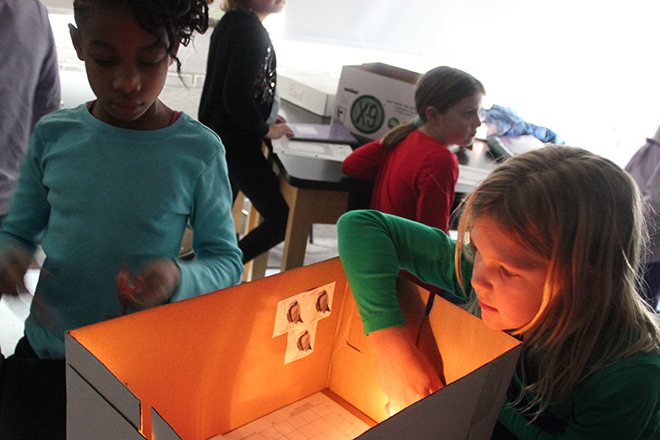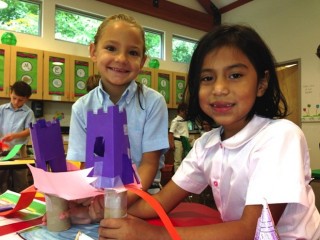How can exploring the angle of reflection help a third grader design a lighting system for a model of an Egyptian tomb? Does soil structure play a part in deciding where to build a bridge? What role will transportation engineering play in our quest for a sustainable planet?
These are all questions that are explored by Community School science students as they engage in a curriculum designed to illustrate how engineers use a well-defined process to solve technological problems around the world.
Most of the engineering units used at Community are part of a STEM (Science, Technology, Engineering and Math) curriculum called Engineering is Elementary, designed by educators at the National Center for Technological Literacy at the Boston Museum of Science.
During each unit, the engineering design steps are discussed and followed. Children learn that engineers begin by asking questions and imagining ideas. They then set about planning, creating, and testing a specific technology. The last step in the process is to analyze the effectiveness of the design and make the necessary improvements.
In a unit on optical engineering, third grade students perform a series of experiments with light to design a method of lighting the hieroglyphs in a closed Egyptian tomb.
Fourth Graders learned about the energy problems faced by villagers in Botswana before planning, constructing, and testing their own version of a solar oven, solving the problem of a lack of available firewood.
Sixth grade students are challenged to design and build a rocket-powered vehicle. Using this vehicle, each student performs an experiment to test the effect of a particular variable on its motion.
In addition to encouraging perseverance, patience, and cooperative skills, the engineering curriculum is popular with the children in part because it allows them to make choices and lets them know that making mistakes is an important part of the learning process.



